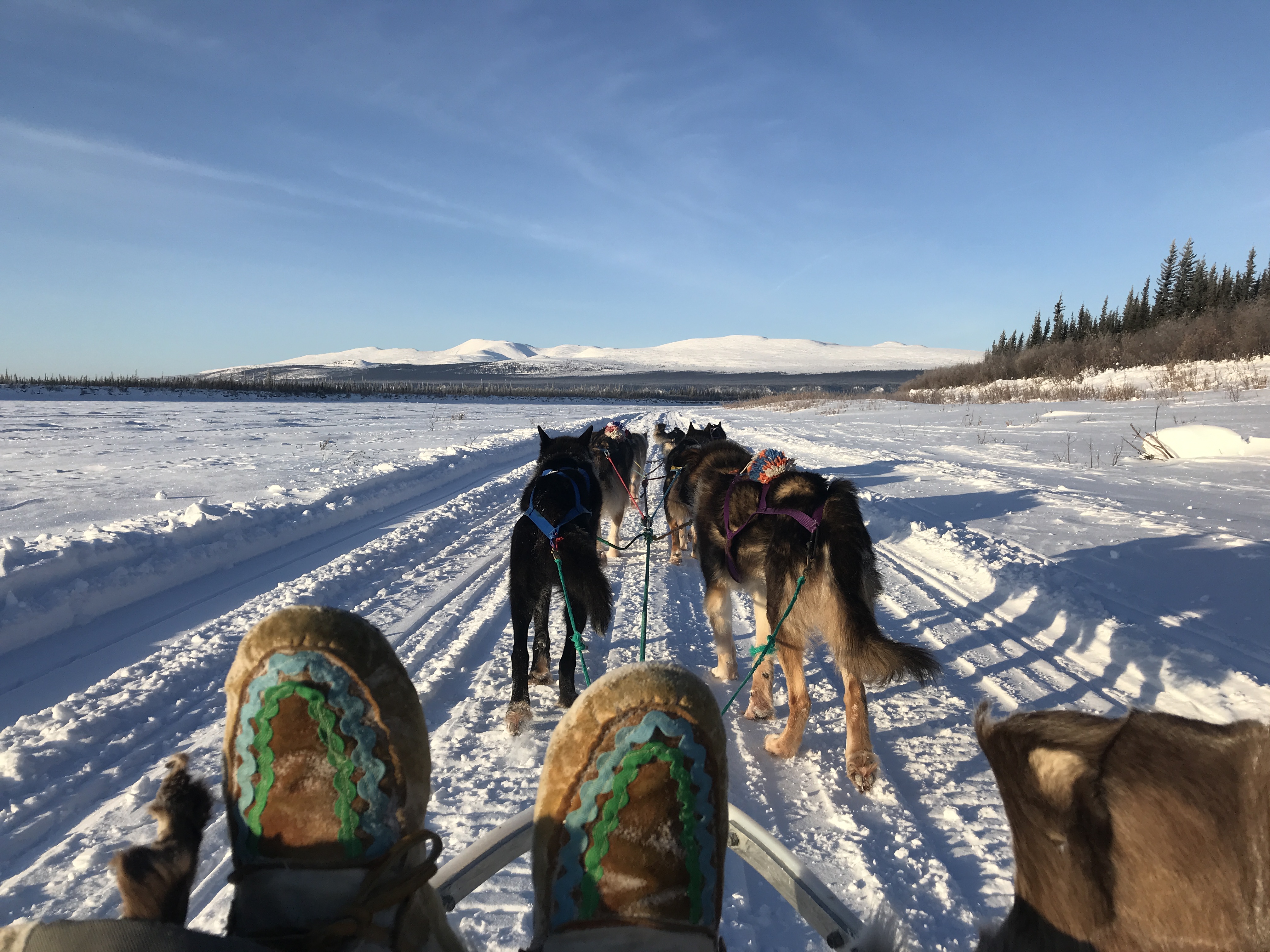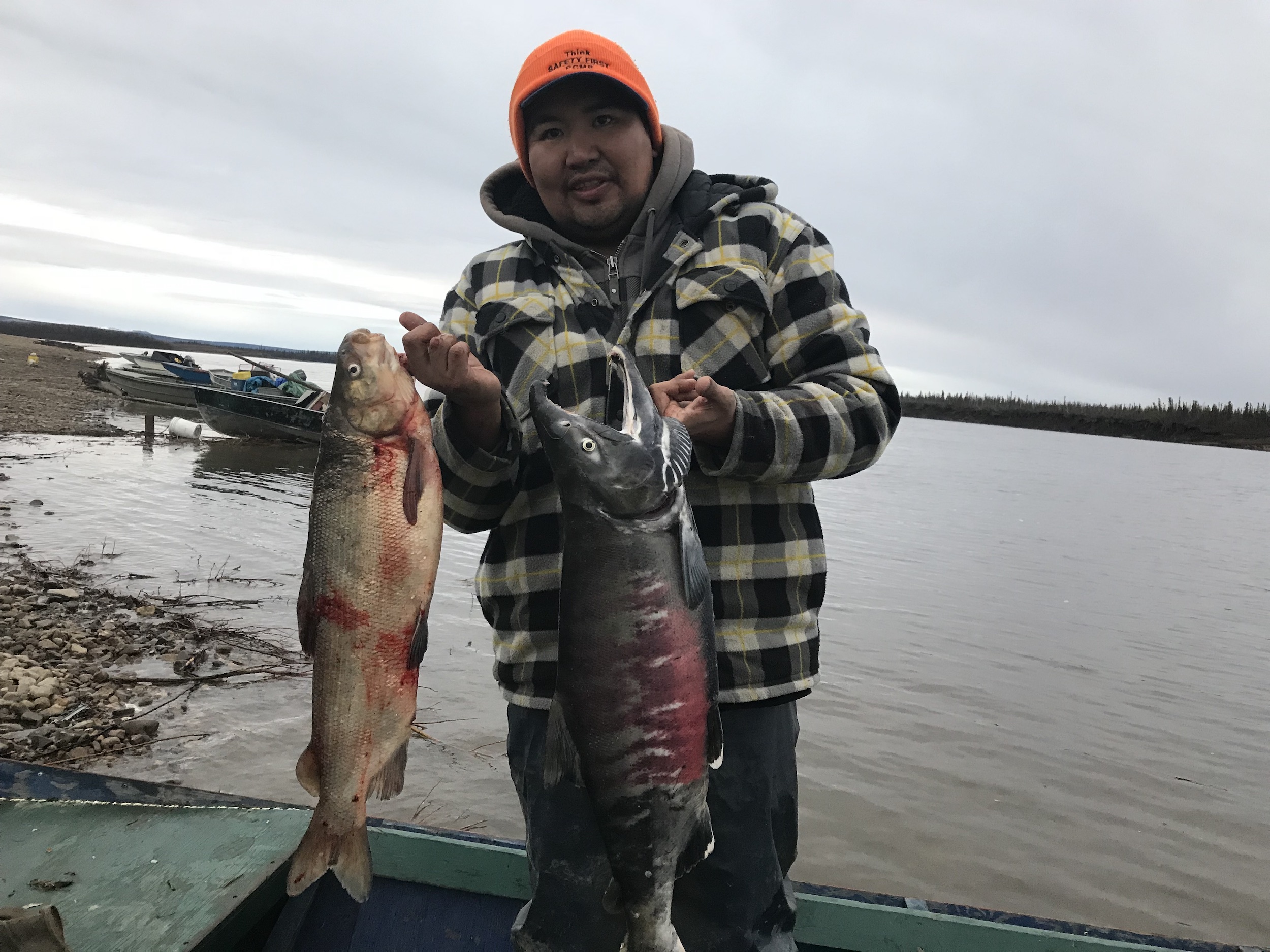Indigenous peoples and people of colour are disproportionately affected by our global climate crisis. But in the mainstream green movement and in the media, they are often forgotten or excluded. This is Tipping Point, a new VICE series that covers environmental justice stories about and, where possible, written by people in the communities experiencing the stark reality of our changing planet.
Canada’s North is warming three times faster than the global average. Nowhere is this more acutely felt than in places such as Old Crow, the northernmost community in Yukon and home to the Vuntut Gwitchin First Nation. Earlier this year, Vuntut Gwitchin became among the first Indigenous communities to declare a climate emergency. Last week, Whitehorse, Yukon’s capital, also declared a climate emergency.
Videos by VICE
An area encompassing Old Crow has seen one of the largest warm-ups in the country, with the average annual temperature rising by about 3.5 C between 1948 and 2016 compared to the national average of 1.7 C, according to a recent government report.
Vuntut Gwitchin member Paul Josie tells us what it’s like living through a climate crisis, how Old Crow has changed, and how science is just starting to catch up with their traditional knowledge and observations.
My name is Paul Josie. I am 33. I am a Vuntut Gwitchin member and Old Crow is my home. It is the most northwestern community in Canada and has a population of 280 to 300, depending on the season.
Just recently, our chief, Dana Tizya-Tramm, declared a climate change emergency. Over the past few years, we have been seeing a lot of changes on the land. I guess a lot of it comes with being above the Arctic Circle. We are the front lines of climate change and we’ve known that for a long time.
In the 1960s, ice used to break up on the river in the first week of June. Now, we’re looking at sometimes the first week of May. And the run-off used to come after the ice break-up. Now you’re seeing them coincide; the spring melt is happening at the same time as the ice break-up.

I remember growing up, they would take me out in October, and we would set nets and fish the coho salmon under the ice. Now, we’re looking at December and it’s not even safe to go on the ice in some places. We are learning to travel on the land again as opposed to using the knowledge that was passed on to us from our elders on which way to go, which time of year to go.
Even just this year, we had -4 C in February when usually temperatures are at least -30 C or -40 C. I was dog-sledding in February and it was warm enough to just mush in a sweater.

In March, we had rain. We usually don’t see rain until June. A few years ago we actually had thunder and lightning at the end of May, which we’ve never seen before, where the storms were so powerful.
We’ve also been noticing the organic material that settles at the bottom of lakes is melting and creating methane bubbles. Those create holes in the frozen lakes in spring that are covered by crusted snow, so you have to be very, very cautious when you’re travelling over lakes in the spring. And spring is when people trap muskrat. I remember when I was growing up, May was still a time that we would return from Crow Flats, and now, in mid-April, it’s dangerous to travel because everything’s melting so fast.
In June and July, it’s become so warm. There’s some rain but not enough to completely soak the land, so it leaves the areas dry and then the lightning hits, and now we’re starting to see more and more wildfires, not only in our traditional territory, but all across Canada.

With the warmer summer season, a lot of the permafrost is melting. A few years ago, I started to see a lot of mudslides in the Porcupine River, which runs next to Old Crow. There was a huge mudslide that almost blocked Crow River, which leads north into Crow Flats which the Vuntut Gwitchin are named after, “the people of the lakes.” The erosion from the high water and the melted permafrost has made the river wider, and the land is being washed away.

A longer warm season has been causing a lot of rapid growth in the shrubs and the willows, so a lot of the areas we used to travel are growing in faster now. This is actually having an impact on the animals; the caribou have used the same trails for thousands of years but the trails are growing in, so they’ve started to change how they’re migrating.
Vuntut Gwitchin coexist with the Porcupine caribou herd. They were called the Porcupine caribou because they would always cross the Porcupine River to go to their wintering grounds. Climate change has changed their migration patterns. The past few years, we’ve noticed that they’ve been going over to Alaska and not even passing the river. They have even started to change when they’re migrating. Sometimes they’ll come a little earlier.

When the caribou haven’t crossed into the wintering grounds, the wolf population starts to get hungry. When the wolves are hungry, they move into our community. There was actually a small pack hanging around our community all winter. The wolves have to find something to eat and Old Crow being the one community in the area, they got curious. They killed a few dogs this past winter.
The different weather patterns are also putting a real strain on the salmon. The sun heats up the water and when it reaches a certain temperature, salmon will not swim upstream because their internal clock tells them the temperature is too high. We’ve been noticing that they’ve been going into different waterways in our traditional territory that they haven’t spawned in before.

We hear our elders talk about when they used to spend time in Crow Flats and they would see the return of migratory birds. They would talk about hundreds upon thousands of ducks, all coming back to Crow Flats to nest. Now, there have been very few migratory birds that come back.
With the climate emergency declaration, we want to get across how important this really is, that the land is changing, the Earth is going through this change. We want to get the word out, create a sense of urgency. And hopefully, it’ll start a ripple effect, one that creates change.
We’re making change, too. Old Crow is a fly-in community, and we use diesel generators for electricity, so it just made sense that we looked into renewable energy. We looked into solar. We have 24-hour sunlight in the summer; you’d generate 900 kilowatts in a day. During the summer months we could probably turn off the diesel generator and save up to 17 percent of diesel flown up. And you’ve got strong north winds in the winter that that we could use to generate wind power.
When we’re thinking about making a plan, I think not only about the next generation, but the next generation and the generation after that. We live a subsistence lifestyle because the cost of food and everything is so high, so it’s very important that we keep our waters clean and our animals healthy.
We always hear about the scientific reports on climate change. But we also have our traditional knowledge, which we’ve been trying to say is important because who else knows the land better than us, the stewards of the land?
The interview has been edited for length and clarity.
Paul Josie is a lifelong resident of Old Crow. He served as a Vuntut Gwitchin councillor for seven years and now runs his own winter tourism business, Josie’s Old Crow Adventures.
Jackie Hong is a journalist in Whitehorse. Follow her on Twitter.
Have a story for Tipping Point? Email TippingPoint@vice.com




